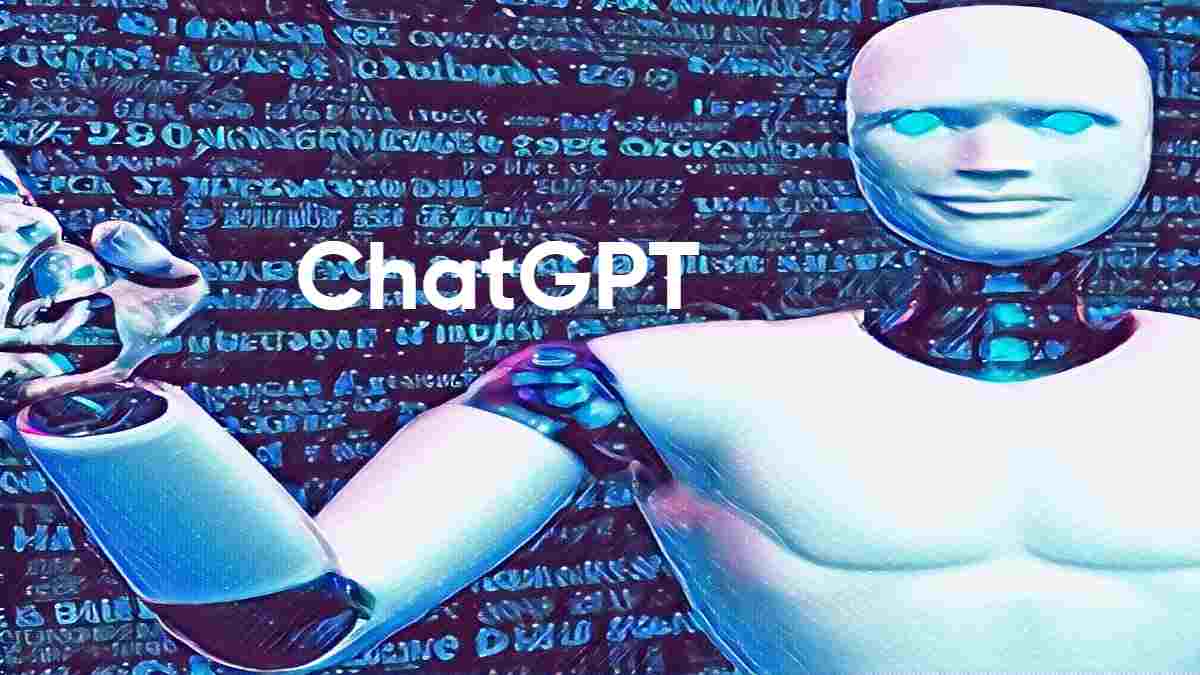ChatGPT is a language model of significant size that was developed by OpenAI. It is designed to generate human-like text and responses to prompts, and can be used for a variety of purposes, such as generating responses for chatbots, summarizing long-form content, and even generating entire articles or stories.
Like other language models, ChatGPT is trained on a vast amount of text data, such as news articles, books, and websites. By examining large amounts of data, it is able to learn the structure and patterns of human language, and can generate text that is similar in style and content to the data it was trained on.
One of the key features of ChatGPT is its ability to generate responses that are contextually relevant and coherent, even when given only a few words or a simple prompt as input. This makes it a powerful tool for natural language processing (NLP) tasks, such as language translation, language generation, and text summarization.
Overall, ChatGPT is a highly advanced NLP model that is capable of generating human-like text and responses to prompts. It has a wide range of potential applications, and is constantly being improved and updated by OpenAI.
Key features of ChatGPT
Some key features include:
Large language model
It is a large language model that has been trained on a vast amount of text data, which allows it to generate human-like text and responses to prompts.
Contextual relevance
It is able to generate responses that are contextually relevant and coherent, even when given only a few words or a simple prompt as input.
Language generation
It is able to generate text in a variety of styles and formats, including chatbot responses, summaries of long-form content, and even entire articles or stories.
Language translation
It can be used to translate text from one language to another, making it a useful tool for language translation applications.
Text summarization
It can generate summaries of long-form content, which can be useful for reducing the time and effort required to read and understand complex documents.
Customization
It can be customized to generate text in specific styles or formats, such as news articles, technical documents, or creative writing.
Continuous improvement
As a language model, ChatGPT is constantly being improved and updated, which allows it to generate increasingly human-like text over time.
How ChatGPT work?
ChatGPT is a large language model that has been trained on a vast amount of text data, such as news articles, books, and websites. By analyzing this data, it is able to learn about the structure and patterns of human language, and can generate text that is similar in style and content to the data it was trained on.
When using ChatGPT, you provide a prompt or input text, and the model generates a response based on the patterns and structures it has learned from the training data. The response is generated using a process called “transformer-based language modeling,” which involves analyzing the input text and generating output text one word at a time, based on the context and structure of the input.
One of the key features of ChatGPT is its ability to generate responses that are contextually relevant and coherent, even when given only a few words or a simple prompt as input. This is made possible by the model’s vast knowledge of language patterns and structures, which allows it to generate responses that flow naturally and make sense in the context of the input.
Overall, it is a powerful tool for natural language processing (NLP) tasks, such as language generation, language translation, and text summarization. It is constantly being improved and updated by OpenAI.
Objectives of ChatGPT
The main objective of ChatGPT is to generate human-like text and responses to prompts, using the patterns and structures learned from a vast amount of training data. It is designed to be a powerful tool for natural language processing (NLP) tasks, such as language generation, language translation, and text summarization.
Some specific objectives of ChatGPT might include:
Generating contextually relevant and coherent responses to prompts
It is designed to generate responses that make sense in the context of the input, even when given only a few words or a simple prompt.
Improving the accuracy and fluency of generated text
It is constantly being improved and updated by OpenAI, with the goal of generating text that is increasingly accurate and fluent over time.
Expanding the range of applications for NLP models
By generating human-like text and responses, ChatGPT has the potential to be used for a wide range of NLP applications, including chatbots, language translation, and text summarization.
Reducing the time and effort required for language processing tasks
By automating language processing tasks, ChatGPT has the potential to save time and effort for users, and to make it easier to understand and analyze large amounts of text.
Team behind ChatGPT : Who created ChatGPT?
ChatGPT is a large language model developed by OpenAI, a research organization that focuses on developing and promoting friendly artificial intelligence (AI). OpenAI was founded in 2015 by a group of high-profile tech entrepreneurs, including Elon Musk and Sam Altman, with the goal of advancing the field of AI in a way that is safe and beneficial to humanity.
The team behind ChatGPT includes a number of researchers and engineers who work on developing and improving the model. These individuals come from a variety of backgrounds and have expertise in fields such as natural language processing (NLP), machine learning, and data science.
Overall, ChatGPT is the result of the collaborative efforts of a team of researchers and engineers at OpenAI, who are dedicated to advancing the field of AI and developing technologies that can benefit society.
History of ChatGPT: When was ChatGPT developed?
It is not clear exactly when ChatGPT was first developed, as OpenAI does not typically disclose detailed information about the development and release of its models.
However, it is likely that ChatGPT is based on the GPT (Generative Pre-training Transformer) family of language models, which were first introduced by OpenAI in 2018. The GPT models are based on a transformer architecture, which allows them to analyze the context and structure of input text and generate output text one word at a time.
Since its release, it has been constantly improved and updated by OpenAI, with the goal of generating increasingly human-like text and responses to prompts. It has also been used for a variety of natural language processing (NLP) tasks, such as language generation, language translation, and text summarization.
Overall, it is a powerful tool for NLP tasks that has a rich history of development and improvement, and has the potential to continue evolving and advancing in the future.
Potential: What ChatGPT is capable of?
ChatGPT is a large language model developed by OpenAI that is designed to generate human-like text and responses to prompts. It is a highly advanced natural language processing (NLP) model that has a wide range of potential applications, including:
Language generation
It is capable of generating text in a variety of styles and formats, including chatbot responses, summaries of long-form content, and even entire articles or stories.
Language translation
It can be used to translate text from one language to another, making it a useful tool for language translation applications.
Text summarization
It can generate summaries of long-form content, which can be useful for reducing the time and effort required to read and understand complex documents.
Customization
It can be customized to generate text in specific styles or formats, such as news articles, technical documents, or creative writing.
Limitations of ChatGPT
Like any machine learning model, ChatGPT has certain limitations that should be considered when using it for natural language processing tasks. Some of the limitations include:
Limited understanding of context
While ChatGPT is able to generate responses that are contextually relevant and coherent, it may not always fully understand the context or meaning of the input text. This can lead to responses that are inappropriate or inaccurate.
Bias in training data
The effectiveness of ChatGPT, a machine learning model, is dependent on the quality of the data used to train it. If the training data contains biases, such as gender or racial biases, these biases may be reflected in the output generated by ChatGPT.
Limited generalization
It is trained on a large amount of text data, but it may not always be able to generate responses that are accurate or relevant when applied to new situations or contexts.
Ethical considerations
The use of large language models like ChatGPT raises ethical concerns, such as the potential for misuse or abuse, the impact on employment and job automation, and the potential for negative social or political consequences.
Overall, while ChatGPT is a powerful tool for natural language processing tasks, it is important to be aware of its limitations and to use it responsibly.
Also read about: AI (Artificial Intelligence) : What we all should know about AI
The future of ChatGPT
The future of ChatGPT is likely to involve continued improvement and expansion of its capabilities as a natural language processing (NLP) tool. As a large language model, it is constantly being updated and improved by their developers, with the goal of generating increasingly human-like text and responses to prompts.
One potential direction for the future of ChatGPT is the expansion of its range of applications. Currently, it is used for a variety of NLP tasks, such as language generation, language translation, and text summarization. However, it is likely that new and innovative uses for ChatGPT will be developed in the future.
Another potential area of development for ChatGPT is the improvement of its ability to understand and generate text in a wide variety of languages and dialects. This could involve training it on a more diverse range of text data, or developing new techniques for cross-lingual language generation.
Finally, it is likely that the ethical considerations surrounding the use of large language models like ChatGPT will continue to be a focus of research and debate in the future. This could involve developing guidelines and best practices for the responsible use of it and other NLP tools, as well as exploring the potential impacts and consequences of their use.
Overall, the future of ChatGPT is likely to involve continued improvement and expansion of its capabilities as a powerful NLP tool, as well as ongoing discussions about the ethical and social implications of its use.
In conclusion
At last, ChatGPT is a large language model developed by OpenAI that is designed to generate human-like text and responses to prompts. It is a powerful tool for natural language processing (NLP) tasks, such as language generation, language translation, and text summarization, and has a wide range of potential applications.
However, it’s important to be aware of the limitations of ChatGPT, such as its limited understanding of context and the potential for bias in the training data. The ethical considerations surrounding the use of large language models like ChatGPT are also an important topic of discussion.
Overall, ChatGPT is a powerful and highly advanced NLP model that has the potential to continue improving and expanding its capabilities in the future.







